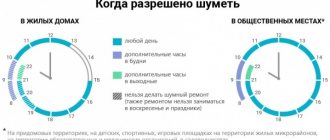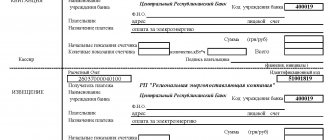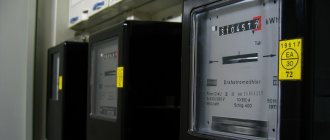Zones divided by hours
Peak : from 7:00 to 10:00 and from 17:00 to 21:00
Half-peak: from 10:00 to 17:00 and from 21:00 to 23:00 hours
Night: from 23:00 to 7:00 hours
| Indicator (consumer groups with tariff breakdown by rates and differentiation by day zones) | rub./kWh | |
| 1st half of the year | 2nd half | |
Population without electric stoves | ||
| 1.1 Single-rate tariff | 4,61 +1,77% | 4,75 +3,04% |
| 1.2 Tariff differentiated by two zones of the day | ||
| Peak zone | 4,9 +1,66% | 5,13 +4,69% |
| Night zone | 2,83 +1,80% | 2,96 +4,59% |
| 1.3 Tariff differentiated by three zones of the day | ||
| Peak zone | 4,93 +1,65% | 5,16 +4,67% |
| Half-peak zone | 4,61 +1,77% | 4,75 +3,04% |
| Night zone | 2,83 +1,80% | 2,96 +4,59% |
Population living in urban settlements in houses equipped in the prescribed manner with stationary electric stoves and (or) electric heating installations, and equivalent to them (tariffs are indicated in rubles, including VAT) ** | ||
| 2.1 Single-rate tariff | 3,46 +1,76% | 3,56 +2,89% |
| 2.2 Tariff differentiated by two zones of the day | ||
| Peak zone | 3,67 +1,66% | 3,84 +4,63% |
| Night zone | 2,13 +1,91% | 2,22 +4,23% |
| 2.3 Tariff differentiated by three zones of the day | ||
| Peak zone | 3,71 +1,64% | 3,89 +4,85% |
| Half-peak zone | 3,46 +1,76% | 3,56 +2,89% |
| Night zone | 2,13 +1,91% | 2,22 +4,23% |
Population living in rural settlements and equivalent (tariffs are indicated including VAT) *** | ||
| 3.1 Single-rate tariff | — — | — — |
| 3.2 Tariff differentiated by two zones of the day | ||
| Peak zone | — — | — — |
| Night zone | — — | — — |
| 3.3 Tariff differentiated by three zones of the day | ||
| Peak zone | — — | — — |
| Half-peak zone | — — | — — |
| Night zone | — — | — — |
4.1 Consumers equal to the population (tariffs are indicated in rubles including VAT): Gardening, vegetable gardening or dacha non-profit associations of citizens - non-profit organizations established by citizens on a voluntary basis to assist its members in solving general social and economic problems of gardening, vegetable gardening and dacha farming economy. Guarantee suppliers, energy sales, energy supply organizations that purchase electrical energy (power) for the purpose of further sale to categories of consumers equal to the population specified in this paragraph2. | ||
| 4.1.1 Single-rate tariff | 4,61 +1,77% | 4,75 +3,04% |
| 4.1.2 Tariff differentiated by two zones of the day | ||
| Peak zone | 4,9 +1,66% | 5,13 +4,69% |
| Night zone | 2,83 +1,80% | 2,96 +4,59% |
| 4.1.3 Tariff differentiated by three zones of the day | ||
| Peak zone | 4,93 +1,65% | 5,16 +4,67% |
| Half-peak zone | 4,61 +1,77% | 4,75 +3,04% |
| Night zone | 2,83 +1,80% | 2,96 +4,59% |
4.2 Consumers equal to the population (tariffs are indicated in rubles including VAT): Legal entities purchasing electrical energy (power) for the purpose of consumption by prisoners in the premises for their detention, subject to the availability of separate metering of electrical energy for these premises. Guarantee suppliers, energy sales, energy supply organizations that purchase electrical energy (power) for the purpose of further sale to categories of consumers equal to the population specified in this paragraph2. | ||
| 4.2.1 Single-rate tariff | 4,61 +1,77% | 4,75 +3,04% |
| 4.2.2 Tariff differentiated by two zones of the day | ||
| Peak zone | 4,9 +1,66% | 5,13 +4,69% |
| Night zone | 2,83 +1,80% | 2,96 +4,59% |
| 4.2.3 Tariff differentiated by three zones of the day | ||
| Peak zone | 4,93 +1,65% | 5,16 +4,67% |
| Half-peak zone | 4,61 +1,77% | 4,75 +3,04% |
| Night zone | 2,83 +1,80% | 2,96 +4,59% |
4.3 Consumers equal to the population (tariffs are indicated in rubles, including VAT): Religious organizations maintained at the expense of parishioners. Guarantee suppliers, energy sales, energy supply organizations that purchase electrical energy (power) for the purpose of further sale to categories of consumers equal to the population specified in this point 2. | ||
| 4.3.1 Single-rate tariff | 4,61 +1,77% | 4,75 +3,04% |
| 4.3.2 Tariff differentiated by two zones of the day | ||
| Peak zone | 4,9 +1,66% | 5,13 +4,69% |
| Night zone | 2,83 +1,80% | 2,96 +4,59% |
| 4.3.3 Tariff differentiated by three zones of the day | ||
| Peak zone | 4,93 +1,65% | 5,16 +4,67% |
| Half-peak zone | 4,61 +1,77% | 4,75 +3,04% |
| Night zone | 2,83 +1,80% | 2,96 +4,59% |
Electricity tariffs in St. Petersburg 2020
On this page you can familiarize yourself with electricity tariffs in St. Petersburg for 2020 (including from July 2016), using which residents of St. Petersburg pay for consumed electricity in 2020. Also on this page you can get information about night and day electricity tariffs. New electricity tariffs, valid from January 1 to July 1, 2020, were adopted at the level of tariffs for the 2nd half of 2015, and from July 2020, an increase in the cost of electricity was established.
Electricity tariffs in St. Petersburg in the 1st half of 2020
| No. | Indicator (consumer groups with tariff breakdown by rates and differentiation by day zones) | Unit | Price (tariff) |
| 1 | 2 | 3 | 4 |
| 1 | Population, except as specified in paragraphs 2 and 3 | ||
| 1.1. | One-part tariff | RUR/kWh | 3.84 |
| 1.2. | One-rate tariff differentiated by two zones of the day | ||
| Daytime zone (peak and half-peak) | RUR/kWh | 3.91 | |
| Night zone | RUR/kWh | 2.30 | |
| 1.3. | One-rate tariff differentiated by three zones of the day | ||
| Peak zone | RUR/kWh | 3.94 | |
| Half-peak zone | RUR/kWh | 3.84 | |
| Night zone | RUR/kWh | 2.30 | |
| 2. | Population living in urban settlements in houses equipped in the prescribed manner with stationary electric stoves and (or) electric heating installations (tariffs include VAT) | ||
| 2.1. | One-part tariff | RUR/kWh | 2.69 |
| 2.2. | One-rate tariff differentiated by two zones of the day | ||
| Daytime zone (peak and half-peak) | RUR/kWh | 2.74 | |
| Night zone | RUR/kWh | 1.61 | |
| 2.3. | One-rate tariff differentiated by three zones of the day | ||
| Peak zone | RUR/kWh | 2.76 | |
| Half-peak zone | RUR/kWh | 2.69 | |
| Night zone | RUR/kWh | 1.61 | |
| 3. | Population living in rural areas | ||
| 3.1. | One-part tariff | RUR/kWh | — |
| 3.2. | One-rate tariff differentiated by two zones of the day | ||
| Daytime zone (peak and half-peak) | RUR/kWh | — | |
| Night zone | RUR/kWh | — | |
| 3.3. | One-rate tariff differentiated by three zones of the day | ||
| Peak zone | RUR/kWh | — | |
| Half-peak zone | RUR/kWh | — | |
| Night zone | RUR/kWh | — | |
| 4. | Consumers equal to the population (tariffs include VAT) | ||
| 4.1. | One-part tariff | RUR/kWh | 3.84 |
| 4.2. | One-rate tariff differentiated by two zones of the day | ||
| Daytime zone (peak and half-peak) | RUR/kWh | 3.91 | |
| Night zone | RUR/kWh | 2.30 | |
| 4.3. | One-rate tariff differentiated by three zones of the day | ||
| Peak zone | RUR/kWh | 3.94 | |
| Half-peak zone | RUR/kWh | 3.84 | |
| Night zone | RUR/kWh | 2.30 | |
Electricity tariffs in St. Petersburg in the 2nd half of 2020
| No. | Indicator (consumer groups with tariff breakdown by rates and differentiation by day zones) | Unit | Price (tariff) |
| 1 | 2 | 3 | 4 |
| 1 | Population, except as specified in paragraphs 2 and 3 | ||
| 1.1. | One-part tariff | RUR/kWh | 4.12 |
| 1.2. | One-rate tariff differentiated by two zones of the day | ||
| Daytime zone (peak and half-peak) | RUR/kWh | 4.29 | |
| Night zone | RUR/kWh | 2.47 | |
| 1.3. | One-rate tariff differentiated by three zones of the day | ||
| Peak zone | RUR/kWh | 4.32 | |
| Half-peak zone | RUR/kWh | 4.12 | |
| Night zone | RUR/kWh | 2.47 | |
| 2. | Population living in urban settlements in houses equipped in the prescribed manner with stationary electric stoves and (or) electric heating installations (tariffs include VAT) | ||
| 2.1. | One-part tariff | RUR/kWh | 2.88 |
| 2.2. | One-rate tariff differentiated by two zones of the day | ||
| Daytime zone (peak and half-peak) | RUR/kWh | 3.00 | |
| Night zone | RUR/kWh | 1.73 | |
| 2.3. | One-rate tariff differentiated by three zones of the day | ||
| Peak zone | RUR/kWh | 3.02 | |
| Half-peak zone | RUR/kWh | 2.88 | |
| Night zone | RUR/kWh | 1.73 | |
| 3. | Population living in rural areas | ||
| 3.1. | One-part tariff | RUR/kWh | — |
| 3.2. | One-rate tariff differentiated by two zones of the day | ||
| Daytime zone (peak and half-peak) | RUR/kWh | — | |
| Night zone | RUR/kWh | — | |
| 3.3. | One-rate tariff differentiated by three zones of the day | ||
| Peak zone | RUR/kWh | — | |
| Half-peak zone | RUR/kWh | — | |
| Night zone | RUR/kWh | — | |
| 4. | Consumers equal to the population (tariffs include VAT) | ||
| 4.1. | One-part tariff | RUR/kWh | 4.12 |
| 4.2. | One-rate tariff differentiated by two zones of the day | ||
| Daytime zone (peak and half-peak) | RUR/kWh | 4.29 | |
| Night zone | RUR/kWh | 2.47 | |
| 4.3. | One-rate tariff differentiated by three zones of the day | ||
| Peak zone | RUR/kWh | 4.32 | |
| Half-peak zone | RUR/kWh | 4.12 | |
| Night zone | RUR/kWh | 2.47 | |
Notes: 1. Tariffs for consumers specified in group 2 are set with a reduction factor k = 0.7 to tariffs for consumers in group 1 of this appendix, established by paragraph 2 of this order. 2. Intervals of daily tariff zones for the population and equivalent categories of consumers are approved by order of the Federal Tariff Service of Russia.
Source: Order of the Tariff Committee of St. Petersburg No. 430-r dated December 25, 2015 “On the establishment of tariffs for electrical energy supplied to the population and equivalent categories of consumers in St. Petersburg for 2016”
In what cases is payment prescribed according to the standard when an electric meter is installed?
In some situations, consumers who pay for electricity according to individual meter readings may be subject to payment according to standards. This is possible if:
- there is a malfunction of the electric meter;
- the consumer does not report meter readings to the energy supply company;
- representatives of the controlling organization are not provided with regulated access to the meter;
- The device was disabled intentionally.
We recommend: How to calculate fees for hot and cold water
If the consumer does not report data on actual electricity readings, according to current legislative norms, within three months the amount of payment is determined based on the average indicators for the previous six months. Starting from the fourth month, an invoice is presented at standard prices obtained by calculation, based on the tariffs and standards approved in the region.
Some tariff standards per person for regions of the Russian Federation
Cases of failure of the electric meter must be confirmed by a corresponding report drawn up by representatives of energy supervision, indicating the reasons for the failure.
Note! Metering devices can be used only until the expiration of the scheduled verification, without which the use of the electric meter is not permitted.
The consumer must control the planned verification period by ensuring access for representatives of the controlling organization to dismantle the device for the purpose of verification work.
Types of three-phase metering devices
Three-phase electricity meters can differ both in the method of connection to the network and in tariffs. First, it makes sense to understand the switching on of the meter - it can be either direct or indirect, and both one and the other can be done using a three- or four-wire system, i.e. using a zero core.
A three-phase electric meter with an indirect or transformer connection does not have direct contact with current-carrying conductors. Current transformers are attached to the busbars, which “transmit” information to the metering device. A similar connection scheme is used in networks with higher load and current strength.
Direct connection meters imply the direct passage of current to the consumer through the device - this is a more common connection option used in a private house and some apartments. With such an installation scheme, the current should not exceed 100 A.
As for tariffs, it is probably no secret to anyone that electricity costs less at night. Therefore, many of those who use it, mainly at night, install two-tariff three-phase meters. Such devices have the ability to automatically switch and count separately the electricity consumed in the intervals from 7 to 23 hours and from 23 to 7. Naturally, there are considerable savings on paying for such a utility service.
Two-tariff three-phase electricity meters are connected in the same way as a regular one - there are no fundamental differences in installation.
The main difference between electricity metering devices is what type it is - analog (also called induction) or electronic.
Connection diagram via transformers
Analog induction meters
The operating principle of these metering devices is similar to an analog single-phase meter. Electricity flowing through the current coil creates an electromagnetic field of eddy current, which acts on the aluminum disk, causing it to rotate. The rotation, through a worm gear, goes to a mechanical counter, which records the consumption.
Naturally, the higher the load on the current coil, the faster the kWh count will occur. Currently, analogue meters are being replaced everywhere with electronic three-phase electricity meters as they have greater accuracy and less error in calculations. Another reason for this replacement was the fact that induction meters cannot be used as two-tariff meters, as well as when readings are taken automatically from them.
Electronic devices
The connection diagram for a three-phase meter of this type is due to the operation of an analog-to-digital converter (ADC), which outputs pulses to the microcircuit in accordance with the frequency graph. Below, the schematic diagram shows the operating principle of such an electric meter.
The microcircuit itself remembers all the data, while it has the ability to display both instantaneous indicators and those obtained over a certain time, depending on the complexity and cost of the metering device.
Operating principle of an electronic meter
Of course, electronic meters, in addition to undoubted advantages, such as a high accuracy class, the possibility of two-tariff or automatic metering and a wide range of operating temperatures, also have their disadvantages. These include the lack of protection against interference. Also, such meters cannot be repaired and do not like voltage surges.
But still, the widespread transition to electronic meters instead of analog ones has shown their advantage over induction devices.
Electricity by the hour - who benefits from it?
During the day, the population uses electricity unevenly . During the daytime, the stations operate almost under time pressure, but in the evenings their load is minimal. Therefore, during the daytime, as a rule, there is a peak in consumption: all generators turn on, and at night, on the contrary, some of them turn off.
This uneven operating mode contributes to high fuel costs for equipment. And this leads to a significant overexpenditure of resources. Therefore, the cost of generating electricity is steadily rising.
To reduce costs, energy suppliers have developed a differentiated tariff that operates by day zone.
It is cheaper to use electricity at night, and this encourages the population to actively use it at this time of day. Thus, the maximum consumption shifts. You can save only if you have a two- or three-tariff meter.






